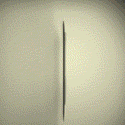
20th Century Studios’ highly acclaimed action-thriller Prey, from director Dan Trachtenberg (10 Cloverfield Lane), is now the No. 1 premiere on Hulu to date, including all film and TV series debuts. Given the string of disappointing Predator sequels after the 1987 original from Die-Hard director John McTiernan, this is quite a feat.
Set in the Comanche nation in 1719, the film follows Naru, a highly skilled hunter who will stop at nothing to protect her tribe and their lands against an invading alien threat. The film is comprised almost entirely of Native and First Nation talent, including the protagonist Naru played by Amber Midthunder (The Ice Road), newcomer Dakota Beavers, Stormee Kipp (Sooyii), Michelle Thrush (The Journey Home), and Julian Black Antelope (Tribal).
Much of the film’s success, aside from the outstanding cast, editing and cinematography, can be attributed to MPC’s global team, led by VFX Supervisor Chris Uyede and VFX Producers Lachlan Christie and Cleo Dessureault. The three spearheaded the delivery of 632 shots for the Predator’s return to screens.
REELated:
MPC provided almost every VFX scene in Prey. This included digital augmentation to the Predator itself, as well as heightened gore, CG arrows, and various environmental enhancements. The team was also tasked with creating a small zoo’s worth of CG North American wildlife, including a grizzly bear, mountain lion, cougars, and a wolf, to name but a few.
The Predator itself was the primary focus of the team. The creature was tackled using a hybrid approach, including practical FX and digital techniques. Working in tandem with Studio ADI, who had fabricated an animatronic suit, MPC created a full CG Predator that was used to augment or replace parts of the suit as well as play as entirely 3D for close-ups on his face or when exaggerated performances were required.





For one of the Predator’s most advanced technological features – its invisibility cloak – the team worked extensively on the look development and technical workflow needed to create a unique look capable of different states supporting storytelling needs.
In one such example, the cloak plays as an energy field membrane that surrounds the predator off the surface of its skin. In another, the cloak becomes compromised and starts to glitch following a violent encounter with a Comanche hunting party. To create these looks, the team used procedurally generated geometry along with a multitude of render passes to allow our artists to produce an array of visual looks and transitions.
Not all the prey in the movie is human, and MPC was tasked with creating a wide range of CG animals. One exciting challenge was depicting the Predator’s battle with a massive grizzly bear in the middle of a river.

The Animation team referenced real-life footage for the mechanics and behavior of the bear before choreographing the collision with a 7-foot humanoid Predator. The Simulation teams added muscle, fur dynamics, and water and blood FX to add to the frantic performance. The CG elements were then integrated with the live-action plates shot, which was shot both on location and against bluescreen in a water tank.
Prey was released on August 5th, 2022, on Hulu.
Follow us on our new Facebook page!










